Growing your own vegetables and flowers doesn't have to break the bank when you embrace creative, budget-friendly raised garden bed solutions. These elevated growing spaces offer superior drainage, better soil control, and easier maintenance compared to traditional ground-level gardens. Whether you're working with reclaimed materials, repurposing household items, or sourcing affordable building supplies, countless inexpensive options can transform any outdoor space into a productive growing area that fits within even the tightest budget constraints.
1. Simple Whole Pallet Raised Garden Bed

A complete pallet serves as an instant raised garden bed frame requiring zero construction skills or cutting. Position four standard shipping pallets on their sides to form a rectangular border, then secure the corners using exterior screws or galvanized nails. This approach works exceptionally well for gardeners seeking immediate results without tool requirements. Standard pallets measure approximately 48 by 40 inches, creating generous growing space perfect for leafy greens, herbs, and compact vegetables. Always verify pallets display "HT" heat-treated stamps rather than chemical treatment markings to ensure food safety. Line the interior with landscape fabric to contain soil while allowing proper drainage, then fill with quality garden soil mixed with compost for optimal plant nutrition.
2. Deconstructed Pallet Wood Raised Garden Bed
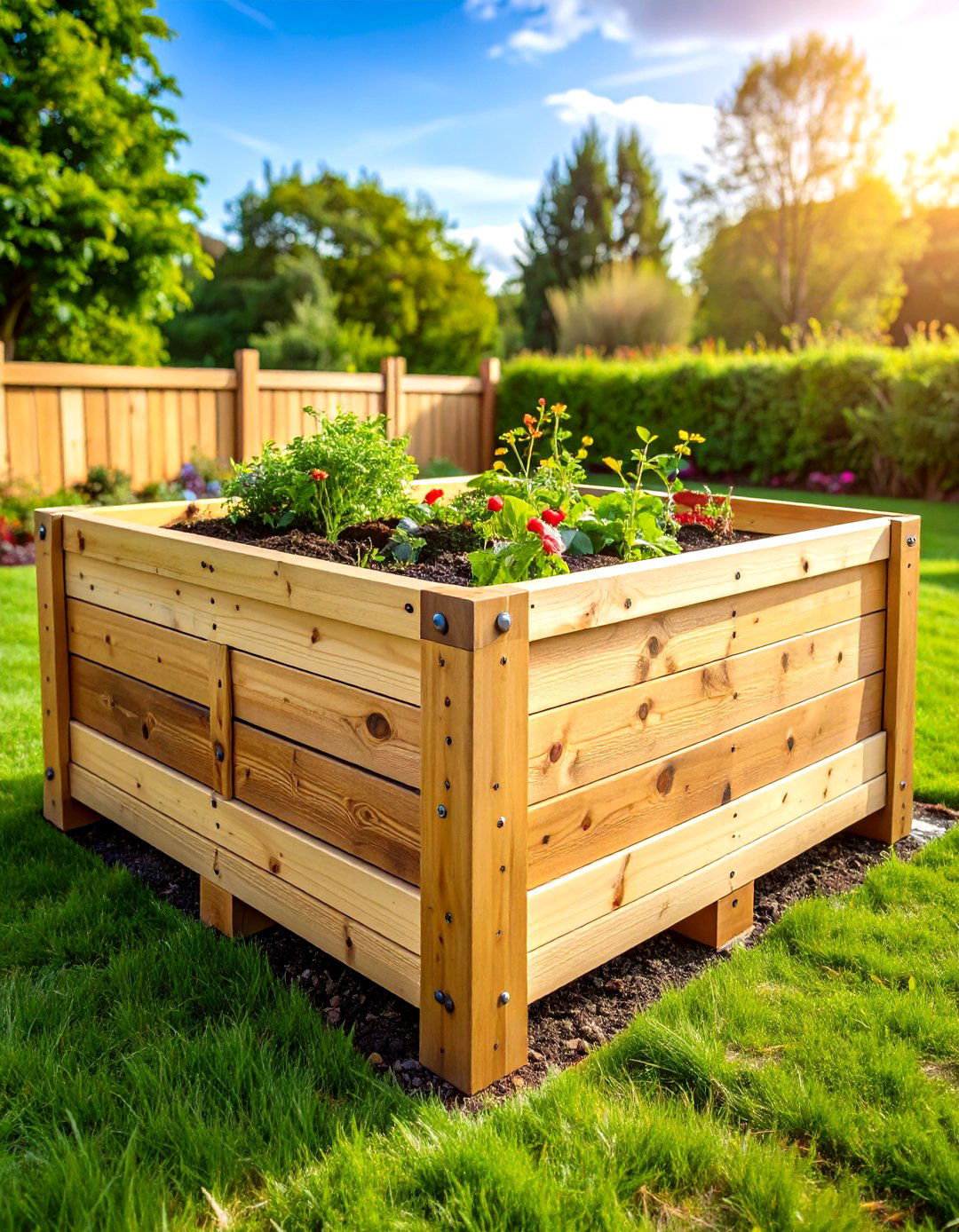
Breaking down shipping pallets provides free lumber for building custom-sized raised garden beds tailored to your specific space requirements. Using a reciprocating saw or pry bar, carefully separate individual boards from pallet frames, removing all nails and staples for safety. Cut boards to desired lengths using a circular saw, typically creating 4-foot by 8-foot beds that remain easily accessible from all sides. Assemble corners using 2x4 support posts and secure with exterior-grade screws for lasting durability. This method allows complete control over bed dimensions and height while utilizing completely free materials. Sand rough surfaces to prevent splinters, and consider applying natural wood preservative to extend lifespan without introducing harmful chemicals to your growing environment.
3. Vertical Pallet Raised Garden Bed Planter

Transform a single shipping pallet into a space-saving vertical raised garden bed perfect for small yards, balconies, or urban gardening situations. Attach landscape fabric or burlap to the back and sides of an upright pallet, creating pockets between the slats for soil and plants. This design maximizes growing space in minimal square footage while adding attractive vertical interest to any garden area. Fill each section with lightweight potting mix suitable for shallow-rooted crops like lettuce, herbs, strawberries, and trailing flowers. Secure the pallet firmly against a fence, wall, or sturdy support structure to prevent tipping. Install a drip irrigation system or hand-water carefully to ensure even moisture distribution throughout all planting levels without washing soil from lower sections.
4. Stacked Cinder Block Raised Garden Bed

Concrete cinder blocks offer exceptional durability and versatility for creating raised garden beds that withstand decades of use without rotting or degrading. Stack blocks two or three levels high in your desired configuration, staggering joints like brickwork for maximum stability and structural integrity. Modern concrete blocks pose no safety concerns for food production, unlike vintage cinder blocks that contained potentially harmful fly ash materials. The hollow cores provide additional planting opportunities for herbs, trailing plants, or decorative flowers, effectively doubling your growing space. Fill block holes with soil or decorative stones for weight and stability. Level the ground carefully before installation to prevent shifting, and consider applying construction adhesive between layers for permanent installation in high-traffic areas.
5. Single-Layer Concrete Block Raised Garden Bed
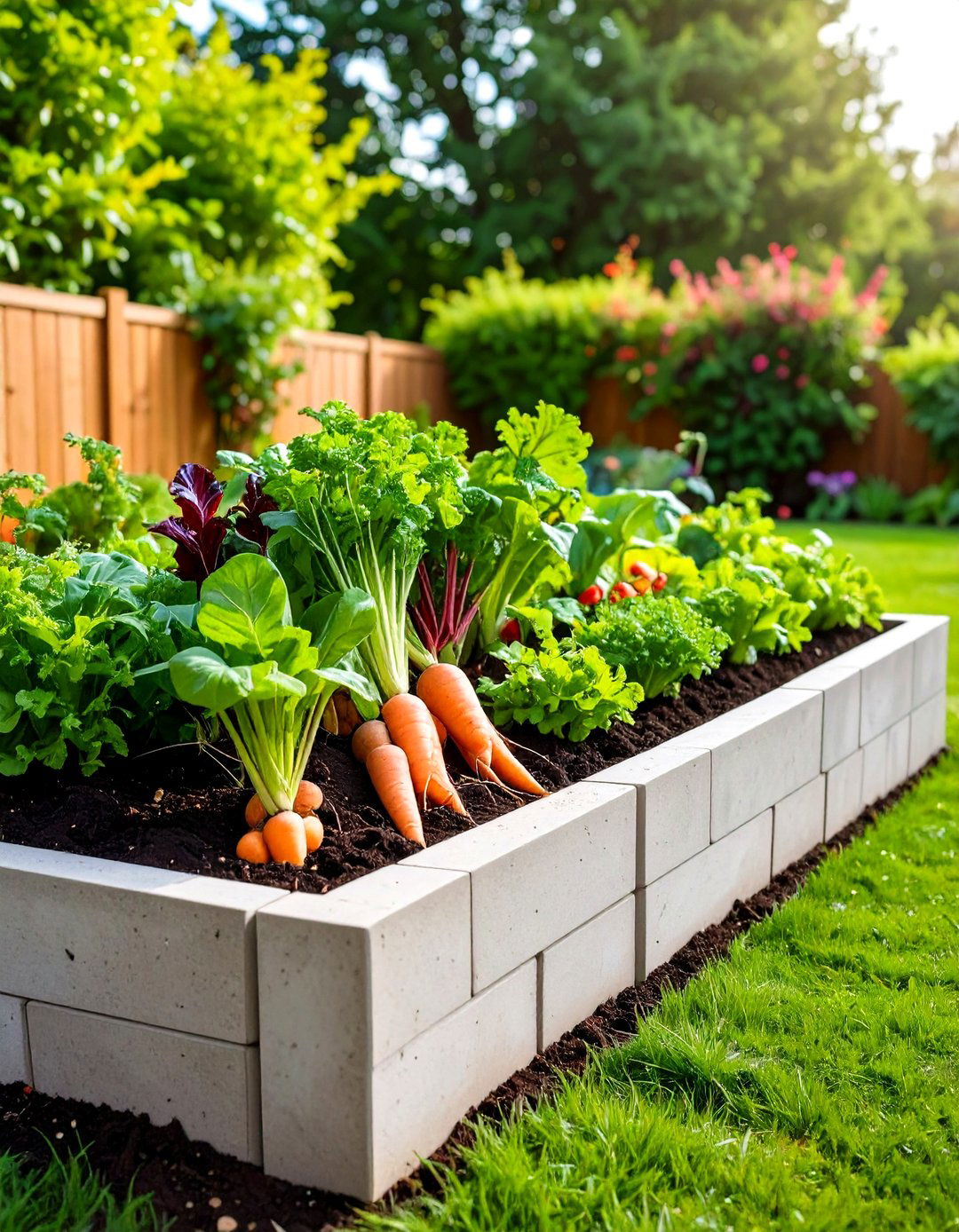
A single row of concrete blocks creates an affordable raised garden bed solution requiring minimal investment while providing essential soil containment and drainage benefits. This low-profile design works particularly well for root vegetables, spreading ground covers, and establishing defined garden borders between lawn and planting areas. Purchase blocks from home improvement stores for approximately $1.50 to $3.00 each, making even large installations budget-friendly compared to purchased wooden kits. Arrange blocks in straight lines or curves to accommodate irregular spaces and landscape features. The modest 8-inch height provides just enough elevation for improved drainage while remaining easy to step over during maintenance. Fill any gaps between blocks with smaller stones or concrete pieces to prevent soil spillage and create clean, professional-looking edges.
6. Decorative Painted Cinder Block Raised Garden Bed
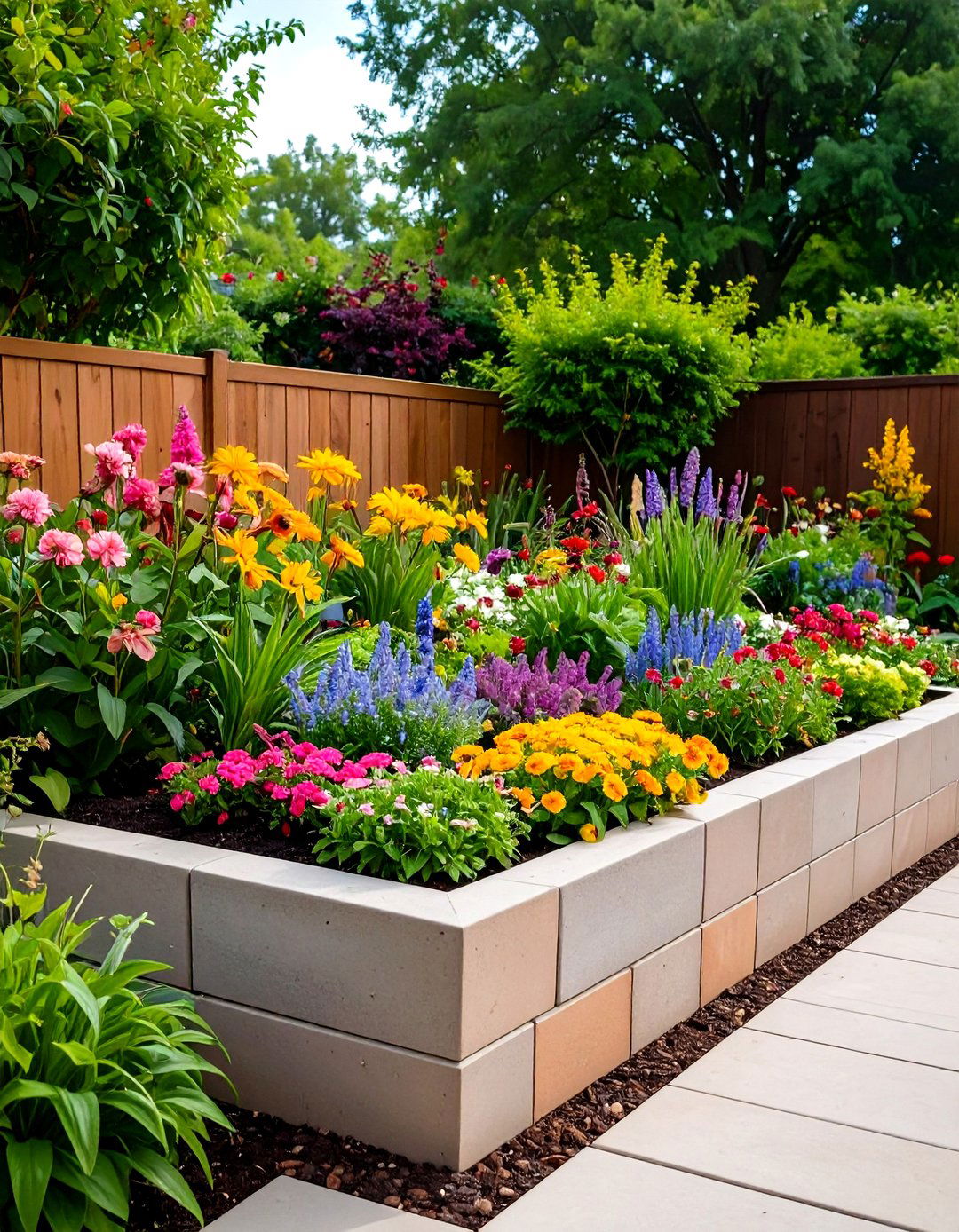
Enhance basic concrete block construction with outdoor paint to create attractive, customized raised garden beds that complement your landscape design aesthetic. Choose weather-resistant masonry paint in colors that coordinate with your home's exterior, garden fencing, or existing hardscape elements. Light colors reflect heat and keep soil cooler during summer months, while darker shades absorb warmth for extended growing seasons in cooler climates. Apply primer specifically formulated for concrete surfaces before painting to ensure proper adhesion and longevity. Stencil patterns, geometric designs, or garden-themed motifs can transform utilitarian blocks into artistic garden features. Consider using chalk paint for a trendy, matte finish that weathers beautifully over time, creating an aged, cottage garden appearance that develops character with exposure to elements.
7. Galvanized Stock Tank Raised Garden Bed
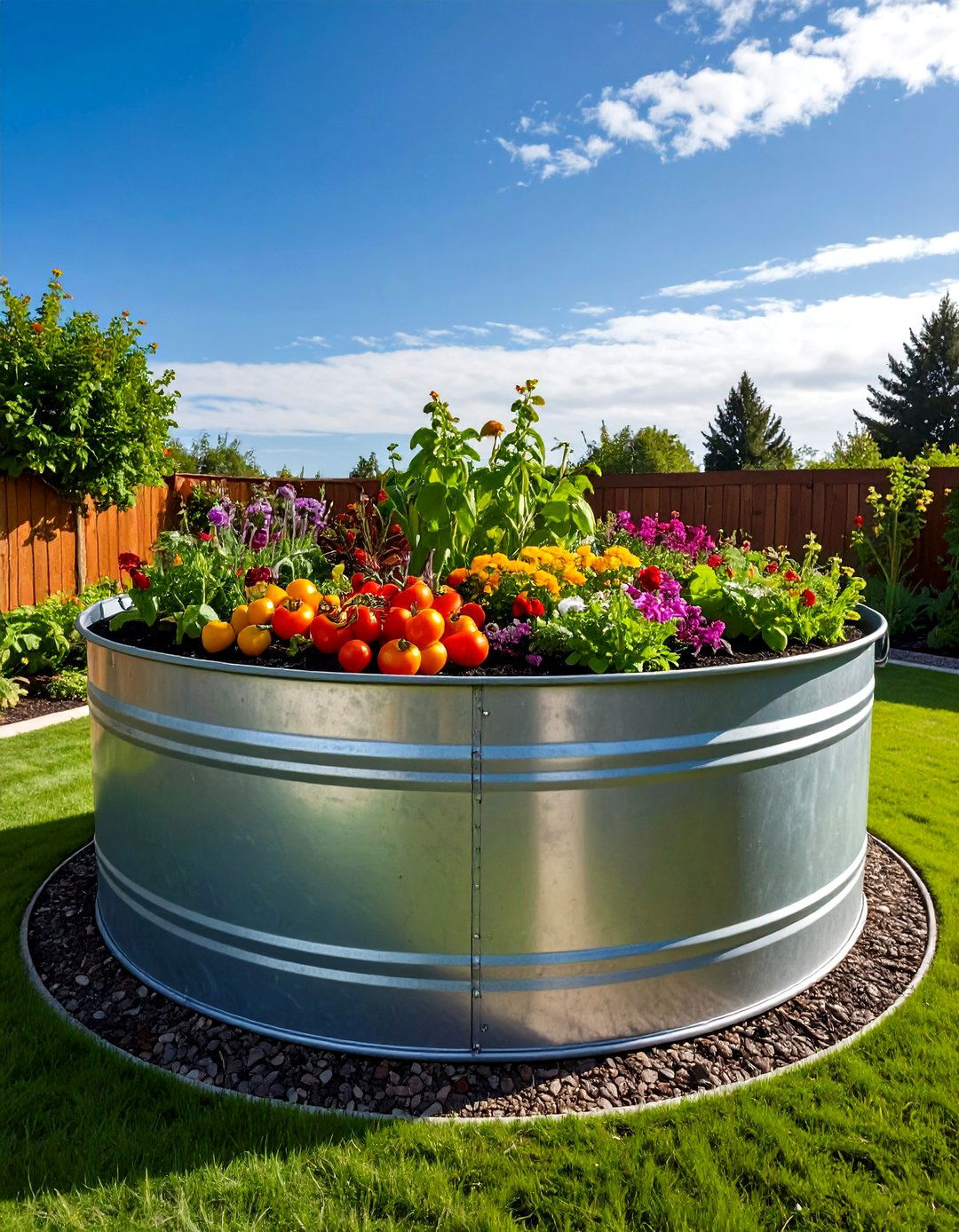
Repurpose livestock watering troughs into attractive, durable raised garden beds that provide exceptional longevity and modern industrial styling. These round or oval containers range from 2 to 8 feet in diameter and typically cost $50 to $200 depending on size and source. Their substantial depth accommodates deep-rooted vegetables like tomatoes, peppers, and root crops while the elevated height reduces bending and kneeling during garden maintenance. Drill drainage holes every 6 to 8 inches around the bottom perimeter using a metal bit to prevent waterlogging. The galvanized coating resists rust for many years, making these containers virtually maintenance-free investments. Position on level ground or add wheels for mobility between growing seasons. Their neutral metal finish complements both rustic and contemporary landscape designs while providing decades of reliable service.
8. DIY Corrugated Metal Raised Garden Bed
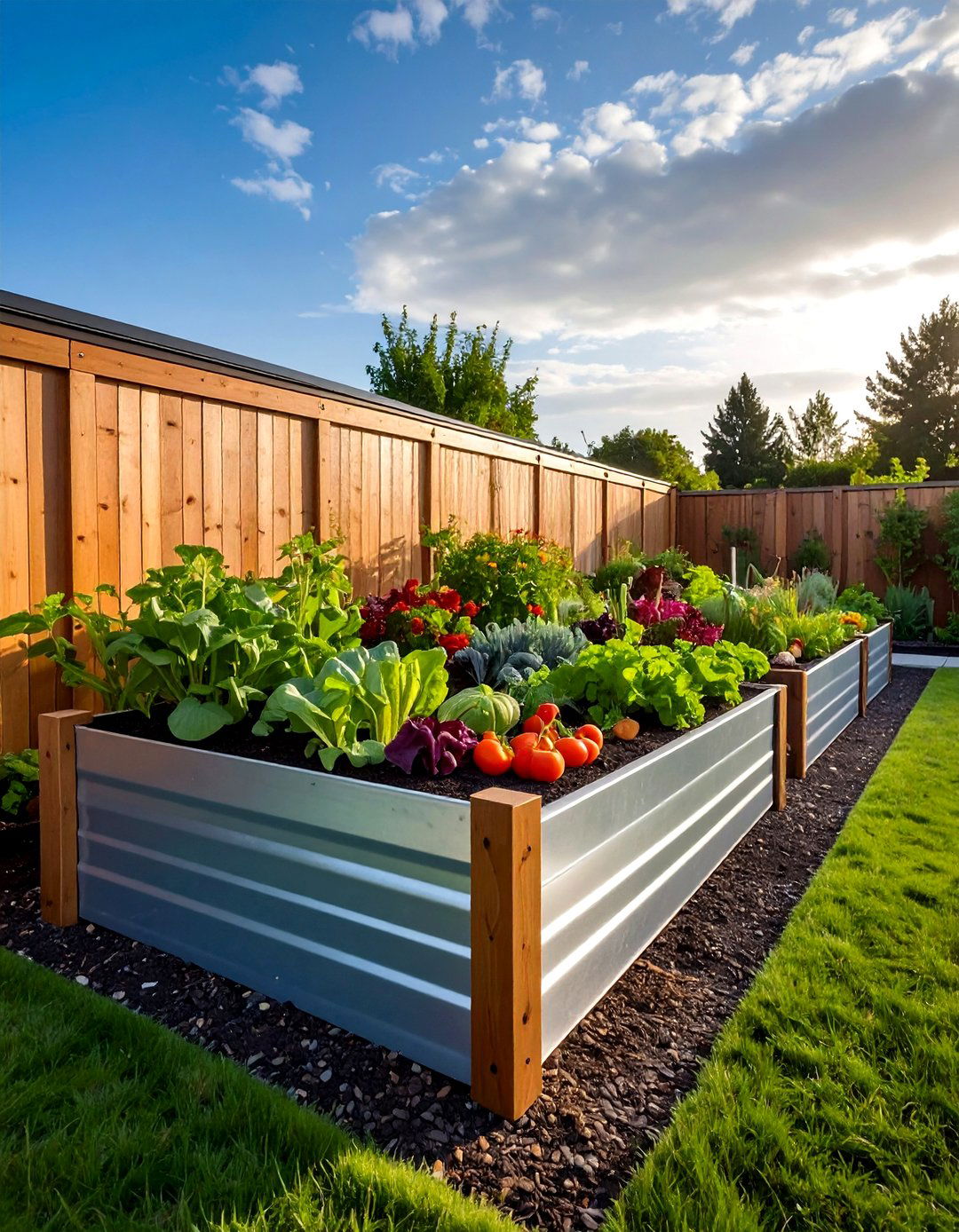
Construct sleek, modern raised garden beds using corrugated galvanized roofing panels available at building supply stores for approximately $20 to $30 per 8-foot section. Cut panels to desired lengths using tin snips or a circular saw with metal-cutting blade, then attach to wooden corner posts using self-drilling metal screws. This approach creates clean lines and industrial aesthetic appeal while maintaining affordability and weather resistance. The reflective surface doesn't absorb excessive heat as commonly feared, remaining cool to touch even during hot summer days. Plan carefully to minimize waste, as standard panel lengths work best for 4-foot, 8-foot, or 12-foot bed dimensions. Wooden caps along the top edge provide comfortable gripping surfaces and finished appearance while protecting hands from sharp metal edges during maintenance activities.
9. Galvanized Tub Raised Garden Bed Container

Large galvanized wash tubs, feed bins, or storage containers create instant raised garden beds requiring only drainage modifications to become productive growing spaces. These round containers typically cost $30 to $80 and provide excellent depth for root development while maintaining manageable sizes for container gardening applications. Drill multiple drainage holes in the bottom using a step bit or hole saw to prevent water accumulation and root rot issues. The contained environment allows precise soil mixture control and easier pest management compared to ground-level gardens. These portable containers can relocate seasonally to follow optimal sun exposure or protect plants from severe weather conditions. Their rustic appearance suits farmhouse and cottage garden styles while providing modern functionality and convenience for urban and suburban gardeners with limited space.
10. Reclaimed Brick Raised Garden Bed

Salvaged bricks from demolition projects, old sidewalks, or construction sites provide charming, traditional materials for building attractive raised garden beds with classic appeal. Stack bricks in running bond patterns without mortar for flexible, removable installations, or use masonry mortar for permanent structures requiring greater stability and weather resistance. Free or low-cost bricks offer exceptional value while creating timeless garden features that improve with age and weathering. The thermal mass of brick walls moderates soil temperature fluctuations, protecting plant roots from rapid temperature changes during transitional seasons. Partial brick walls combined with wooden tops create comfortable seating areas around garden beds. Choose fire bricks for the most durable option, or select common bricks for budget-conscious projects where perfect uniformity isn't essential for the overall aesthetic appeal.
11. Natural Stone Raised Garden Bed
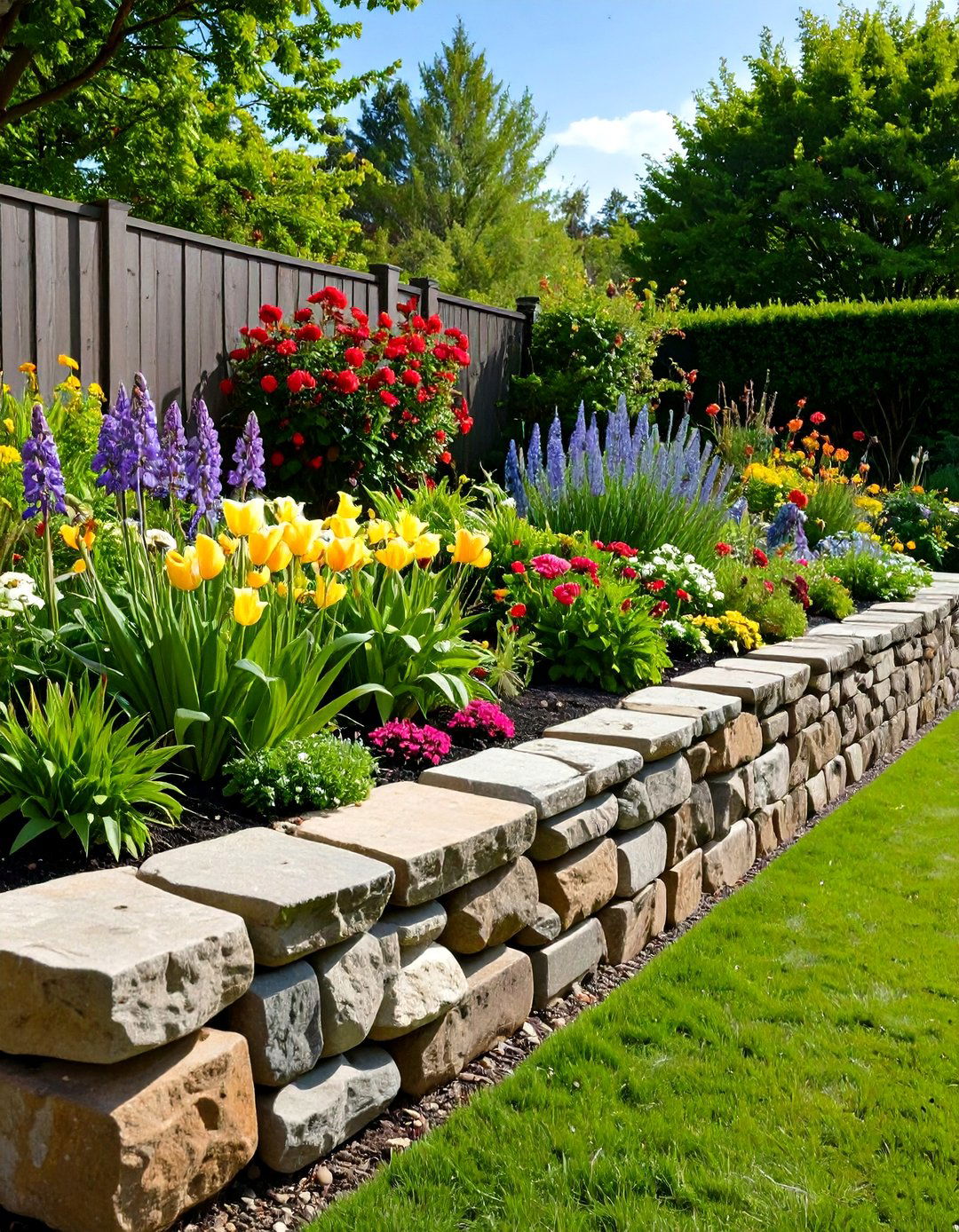
Fieldstone, river rock, or quarried stone pieces create beautiful, permanent raised garden beds that blend seamlessly with natural landscape settings. Collect stones from your property, riverbeds, or purchase from landscape supply yards for approximately $30 to $100 per ton depending on stone type and regional availability. Dry-stack stones in stable configurations, using larger foundation stones and smaller pieces to fill gaps and create level courses. This ancient building technique requires no mortar or special tools while providing excellent drainage and long-term durability. Stone walls moderate soil temperatures naturally while adding significant aesthetic value to garden spaces. The irregular shapes and natural colors complement cottage gardens, wildlife habitats, and xeriscaping designs. Allow spaces between stones for beneficial insects and small wildlife while maintaining structural integrity through careful stone selection and placement techniques.
12. Fallen Log Raised Garden Bed Border
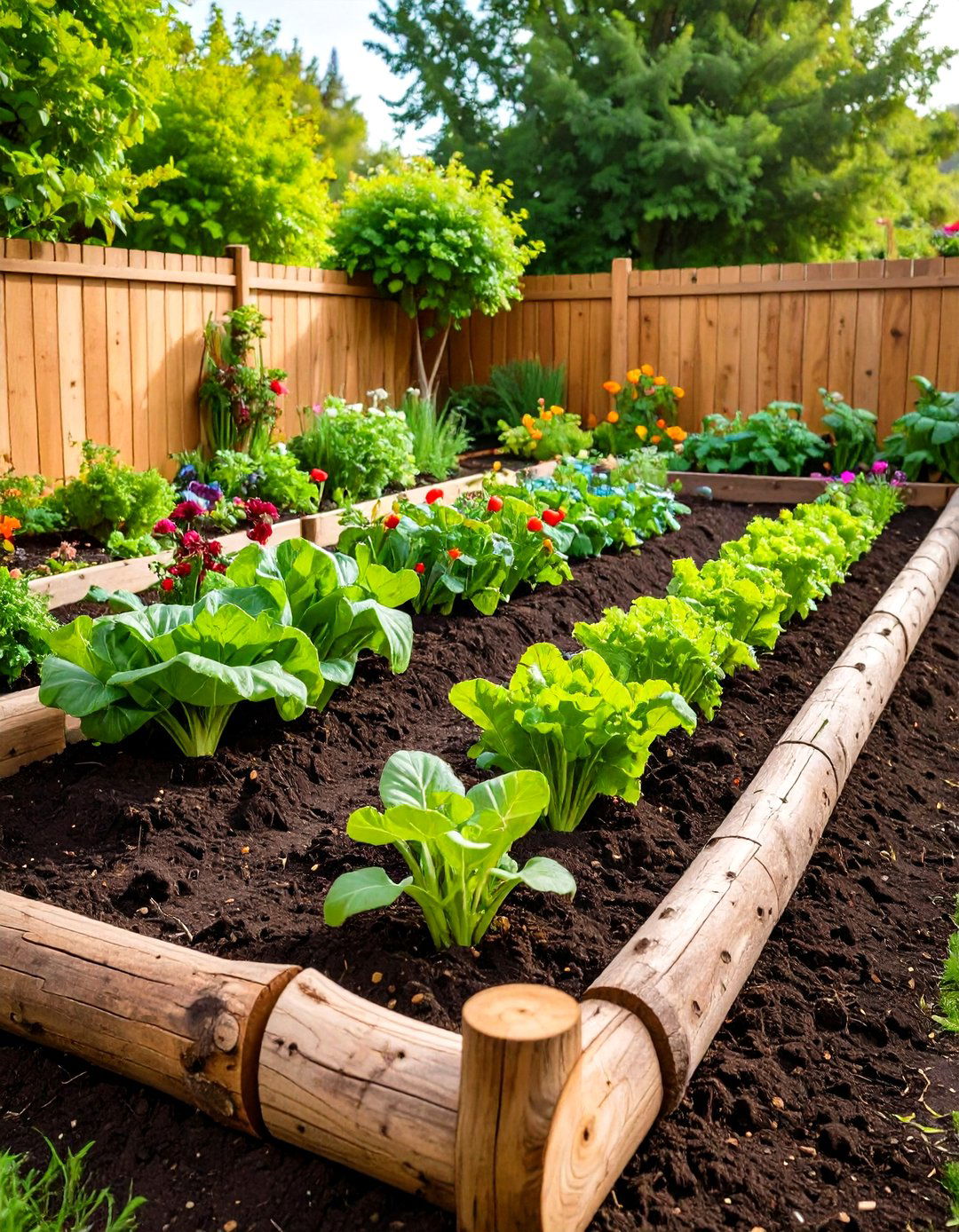
Utilize fallen trees, large branches, or salvaged logs to create rustic raised garden bed borders that decompose slowly while enriching soil with organic matter. This completely free material source works particularly well for homeowners with mature trees or access to urban tree removal operations. Position logs to form rectangular or curved bed shapes, notching corners for stable joints that won't shift during soil settling. The decomposition process adds valuable nutrients and improves soil structure over time, essentially creating a living composting system within your garden bed framework. Different wood species offer varying decomposition rates, with hardwoods lasting several years while softwoods break down more rapidly. Stack smaller branches inside log borders to increase bed height and add additional organic matter. This natural approach attracts beneficial insects and supports sustainable gardening practices.
13. Repurposed Bathtub Raised Garden Bed

Old cast iron, porcelain, or fiberglass bathtubs create unique, conversation-starting raised garden beds with excellent depth for large plants and root vegetables. Salvage tubs from bathroom renovations, demolition sites, or purchase from architectural salvage yards for $50 to $200 depending on condition and style. These containers provide 12 to 18 inches of growing depth while offering interesting focal points in garden designs. Drill drainage holes in the bottom using appropriate bits for the tub material, ensuring adequate water flow to prevent plant root problems. Position tubs on stable, level surfaces or create permanent installations with concrete foundations. The high sides deter rabbits and other ground-dwelling pests while making garden maintenance easier on backs and knees. Paint exterior surfaces with weather-resistant coatings to complement surrounding landscape elements and prevent rust in metal tubs.
14. Old Tire Raised Garden Bed Stack
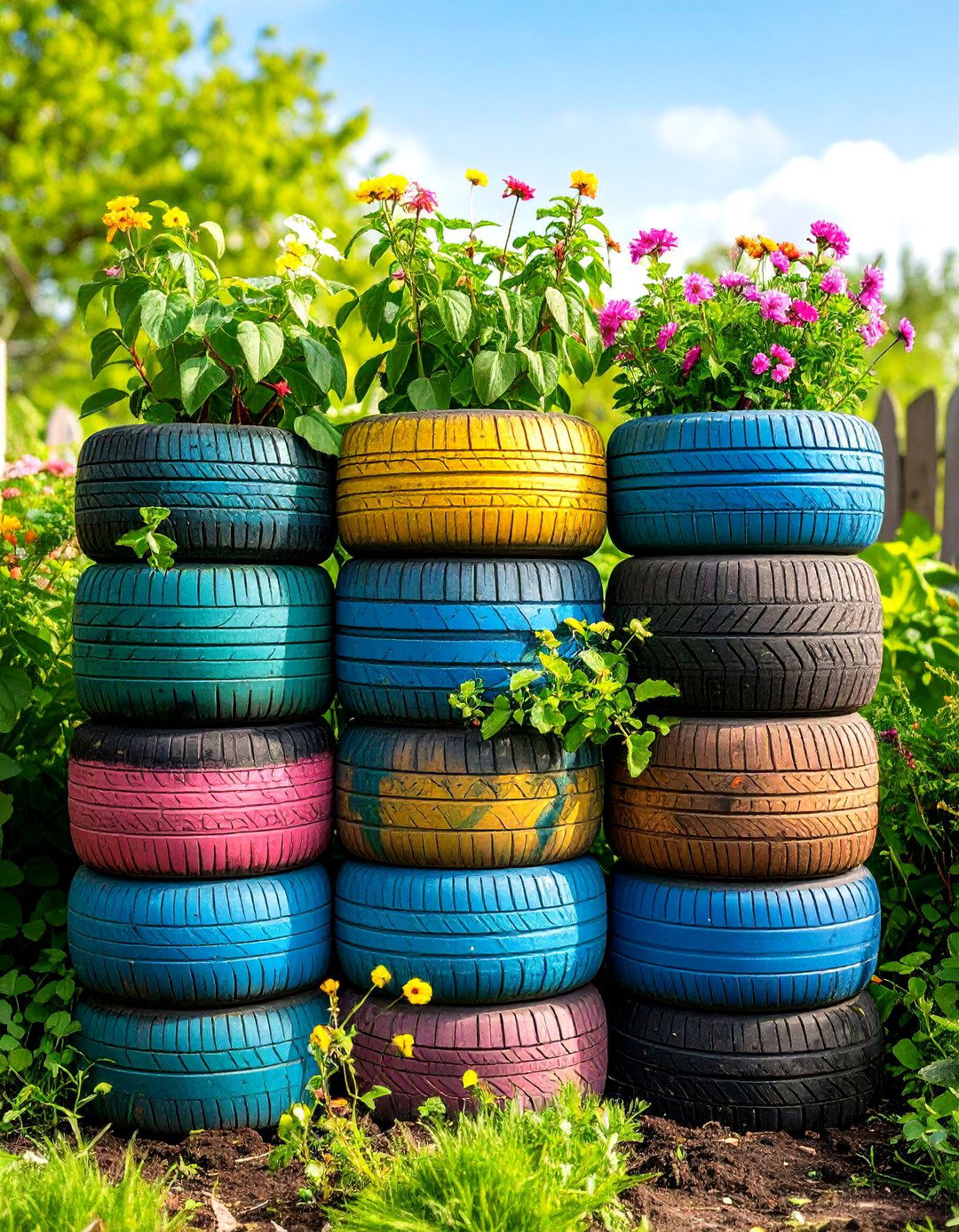
Discarded automobile tires provide free materials for creating circular raised garden beds, though gardeners should consider potential chemical concerns when growing edible crops. Stack tires to desired heights, typically two to four high, creating substantial growing depth for larger plants and vegetables requiring extensive root systems. Paint tires with light-colored, non-toxic paint to reduce heat absorption and improve aesthetic appeal in garden settings. These containers work exceptionally well for potatoes, where additional tires can be added as plants grow taller, simplifying harvest processes. The rubber material provides excellent drainage while retaining soil moisture effectively. Some gardeners prefer using tires exclusively for ornamental plants due to uncertainties about chemical leaching into edible crops. Thoroughly clean tires before use and consider lining with food-safe materials when growing vegetables for consumption.
15. Hay Bale Raised Garden Bed
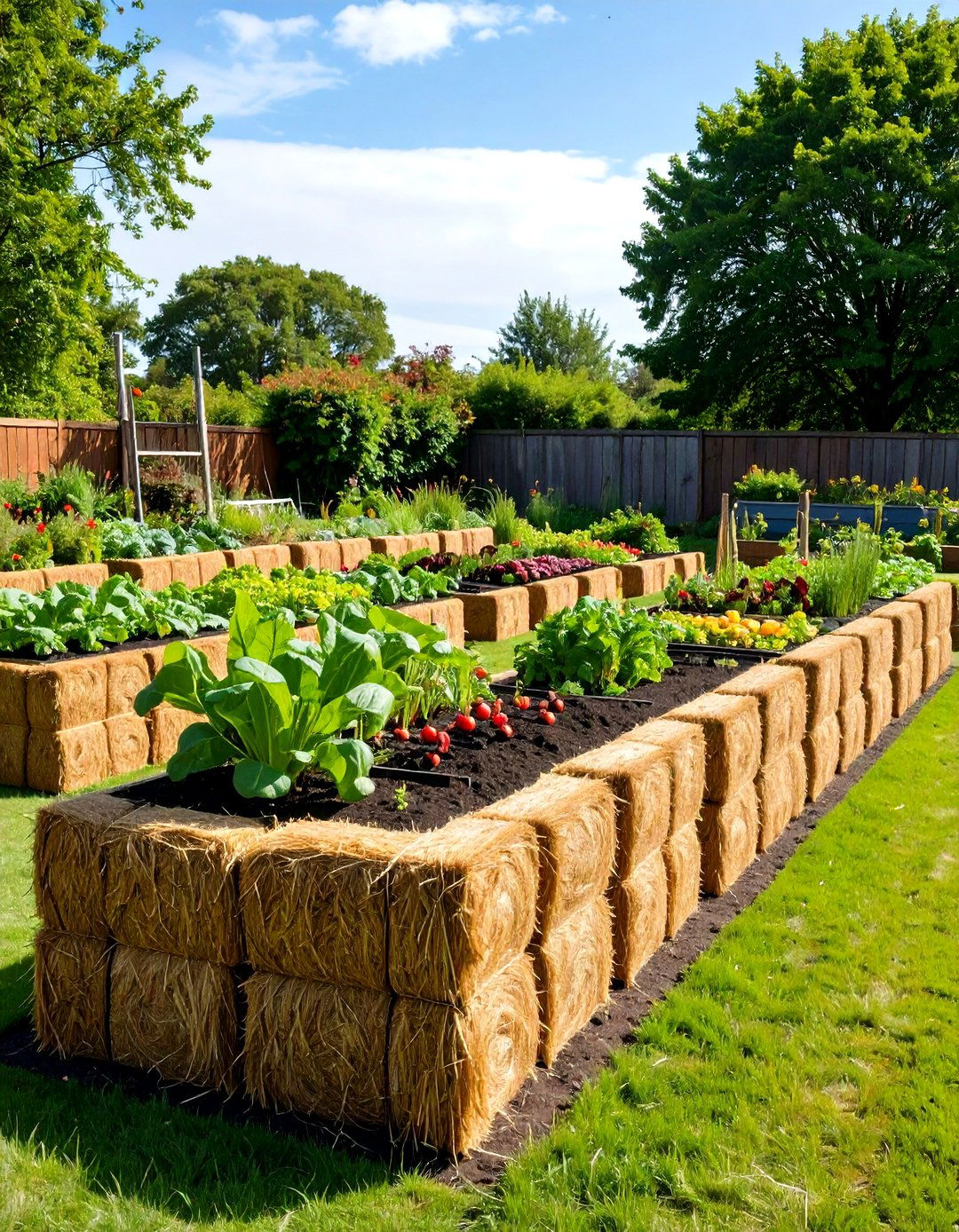
Compressed hay or straw bales create temporary raised garden beds that gradually decompose into valuable compost while providing growing medium for vegetables and flowers. Purchase bales from feed stores or farms for $5 to $15 each, arranging them in rectangular configurations to form bed borders. The bales themselves serve as growing medium once conditioned through watering and nitrogen addition processes that accelerate decomposition. This method works particularly well for annual crops and provides excellent soil amendment for future gardening seasons. Plant directly into bale tops or create soil-filled centers surrounded by decomposing bale walls. The organic matter attracts beneficial soil organisms while providing excellent drainage and moisture retention characteristics. Expect bales to last one to three growing seasons depending on local climate conditions and bale composition before requiring replacement with fresh materials.
16. Wine Barrel Raised Garden Bed Planter
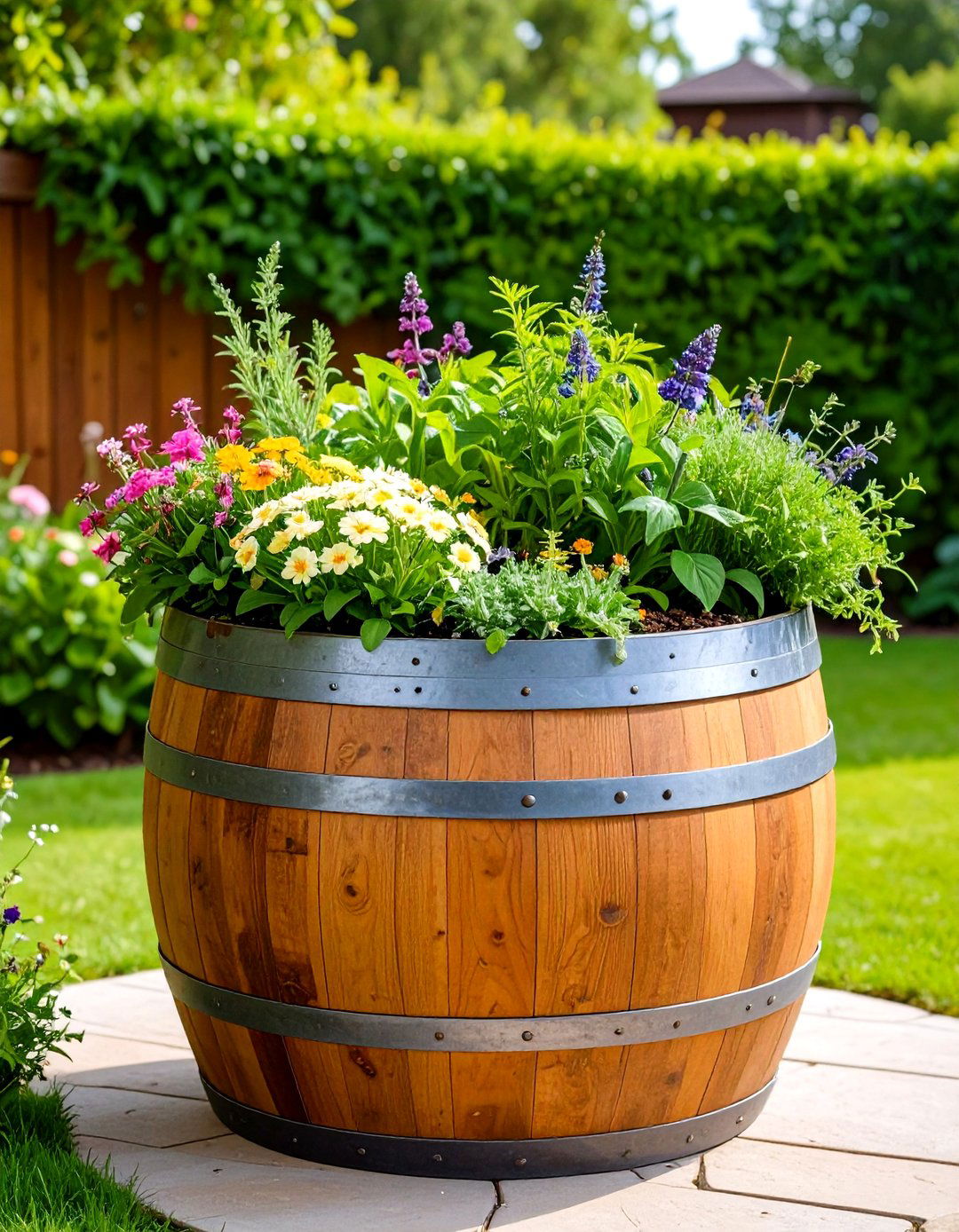
Half wine barrels or whiskey barrels create attractive raised garden bed containers perfect for patios, decks, or formal garden settings where portable growing solutions are preferred. Purchase from garden centers, wineries, or specialty retailers for $40 to $120 depending on size and finish quality. These wooden containers provide rustic charm while offering excellent growing conditions for herbs, vegetables, and flowering plants. Drill additional drainage holes if necessary and line with landscape fabric to prevent soil loss while maintaining water flow. The natural wood appearance complements most landscape styles and weathers to attractive gray tones over time. Position barrels strategically to create functional groupings or define outdoor living spaces. The contained environment allows precise soil mixture control and easy seasonal plant changes. Consider adding wheels or plant caddies to large barrels for improved mobility during maintenance or weather protection needs.
17. PVC Pipe Frame Raised Garden Bed

Construct lightweight, modular raised garden beds using PVC pipe and connector fittings for approximately $20 to $40 per 4x8-foot bed. Cut pipes to desired lengths using a pipe cutter or fine-tooth saw, then assemble frames using corner and T-connectors without requiring permanent adhesive connections. This approach allows seasonal disassembly for storage or bed reconfiguration based on changing garden needs. Attach landscape fabric or hardware cloth to frame sides to contain soil while providing drainage. The white PVC reflects heat and won't absorb excessive solar energy that could damage plant roots. These beds work exceptionally well for renters or gardeners requiring portable growing solutions. Cover exposed pipe ends with decorative caps for safety and finished appearance. The modular design allows expansion or modification as gardening interests and space requirements evolve over time.
18. Gabion Wire Cage Raised Garden Bed
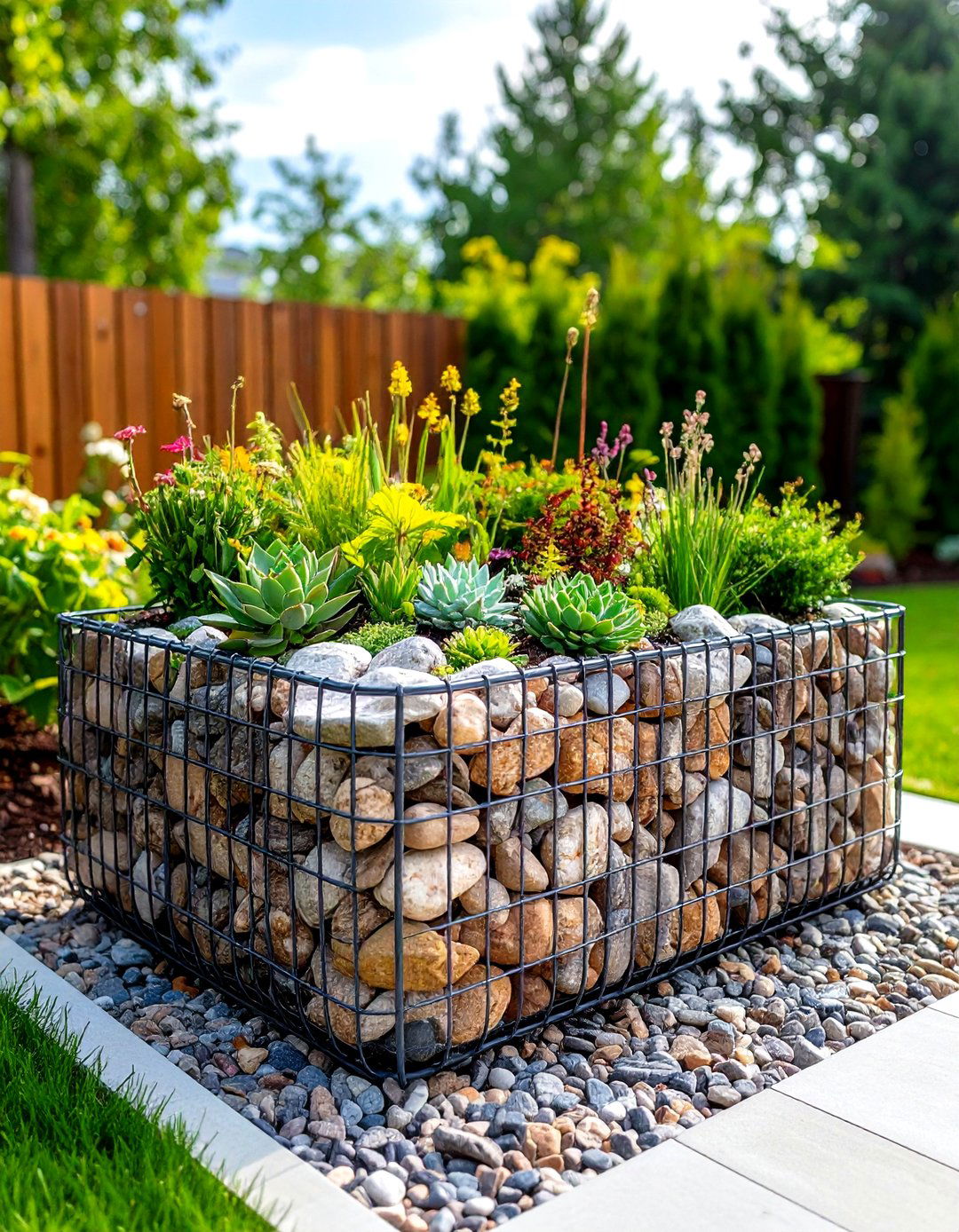
Wire gabion cages filled with rocks, broken concrete, or decorative stones create modern, industrial-style raised garden beds with excellent drainage characteristics. Purchase gabion baskets from landscape suppliers or construct using welded wire mesh and zip ties for custom sizing options. Fill cages with free materials like broken concrete from demolition projects, fieldstones, or river rocks depending on desired aesthetic and availability. This drainage-focused design prevents waterlogging while creating contemporary architectural elements in garden settings. The stone-filled walls moderate soil temperatures and provide habitat for beneficial insects and small wildlife. Install landscape fabric along inner walls before adding soil to prevent washout through wire openings. These permanent installations work well for xeriscaping, modern landscape designs, and areas requiring superior drainage control. The industrial appearance complements contemporary architecture while providing practical growing solutions.
19. Repurposed Furniture Raised Garden Bed
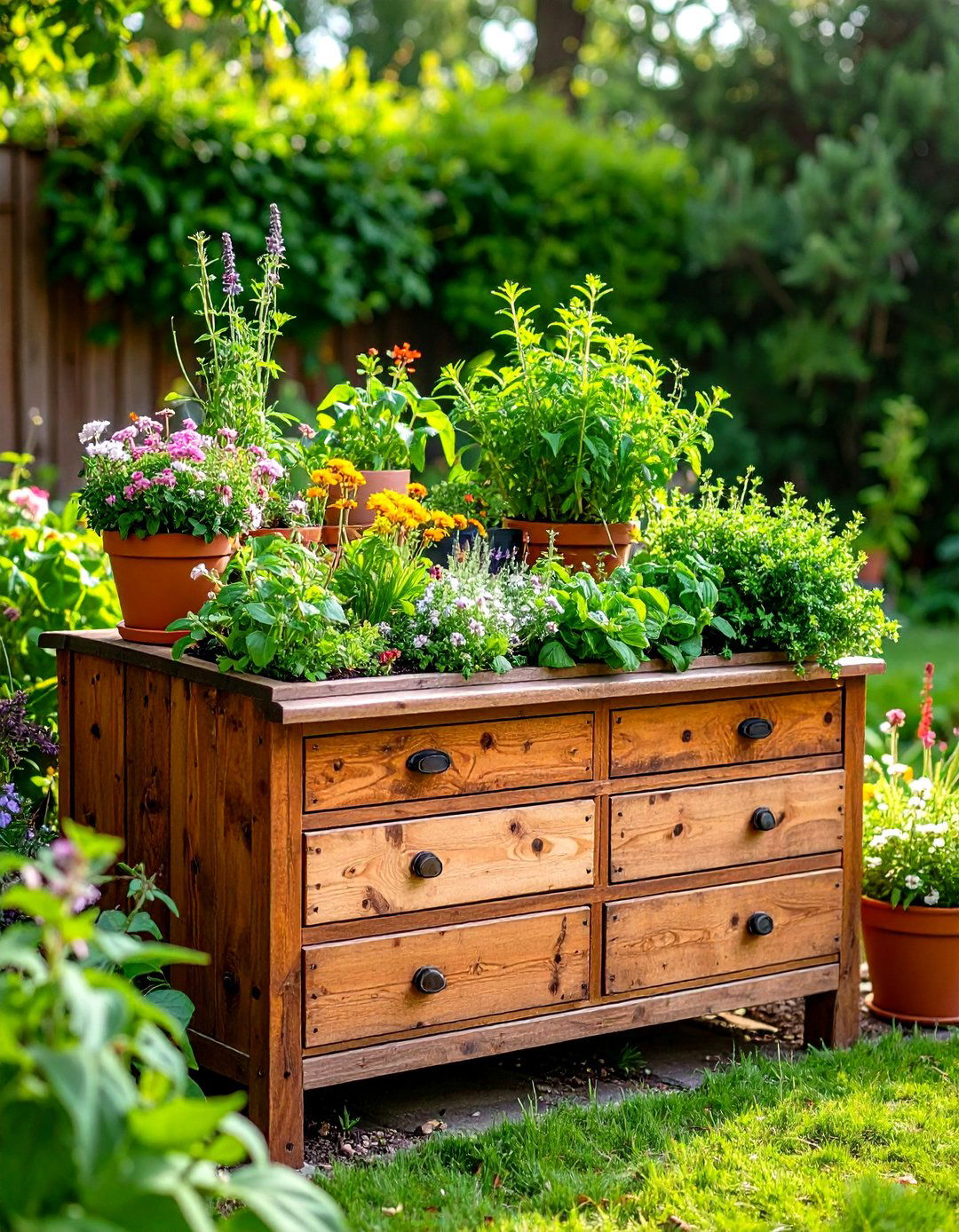
Transform old dressers, bookcases, desk drawers, or entertainment centers into unique raised garden beds that add whimsical character to garden spaces. Remove backs from furniture pieces and drill drainage holes in bottoms before lining with landscape fabric to create functional planting containers. These conversation pieces work particularly well for herb gardens, small vegetables, or flower displays in outdoor living areas. Sand and apply weather-resistant finishes to extend furniture life in outdoor environments. The multiple compartments in some furniture pieces allow separation of different plant types or creation of organized herb gardens with labeled sections. Position furniture beds near patios, porches, or gathering areas where their decorative value enhances outdoor entertainment spaces. This upcycling approach diverts furniture from landfills while creating memorable garden features that reflect personal style and creativity.
20. Concrete Tube Form Raised Garden Bed

Large concrete forming tubes, typically used for building footings and columns, create excellent circular raised garden beds when cut to appropriate heights. Purchase tubes from building supply stores for $15 to $40 each, then cut to desired heights using a reciprocating saw or utility knife. These cardboard or fiber tubes provide temporary structure that gradually decomposes while soil and plant roots stabilize the growing medium. The circular shape maximizes growing area while minimizing material costs and construction time requirements. Install drainage layers in the bottom third using gravel, broken pottery, or coarse organic matter before adding growing soil. These beds work exceptionally well for deep-rooted plants, ornamental grasses, or specimen plants requiring substantial root space. The biodegradable tubes eliminate removal concerns while enriching soil as they decompose over time, creating truly sustainable growing solutions for environmentally conscious gardeners.
Conclusion:
Creating productive raised garden beds doesn't require significant financial investment when you embrace creative, resourceful approaches to materials and construction. From free shipping pallets and fallen logs to affordable concrete blocks and repurposed containers, countless options exist for every budget and aesthetic preference. These inexpensive solutions provide the same benefits as costly commercial alternatives while allowing personal customization and sustainable practices that benefit both your garden and the environment.


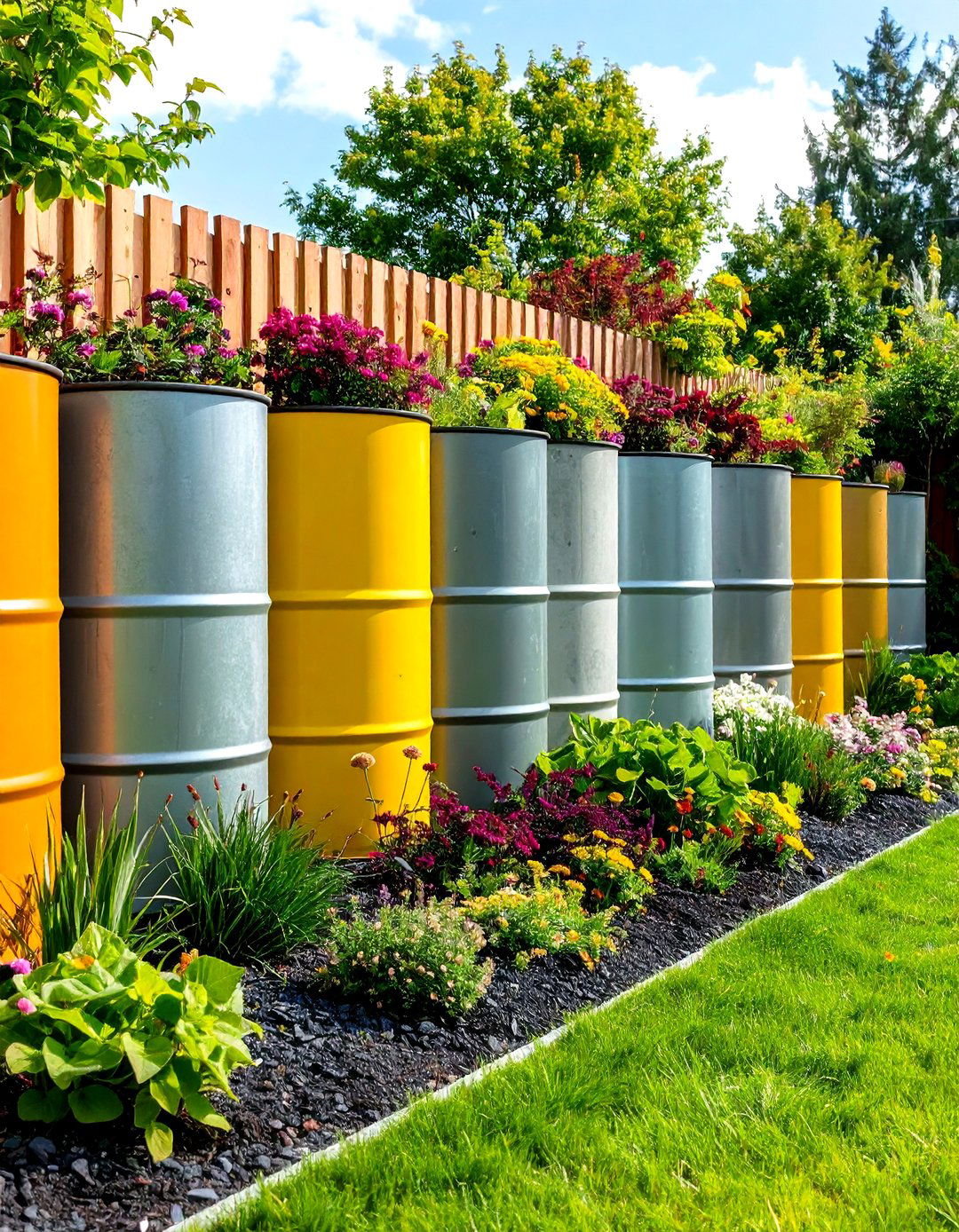

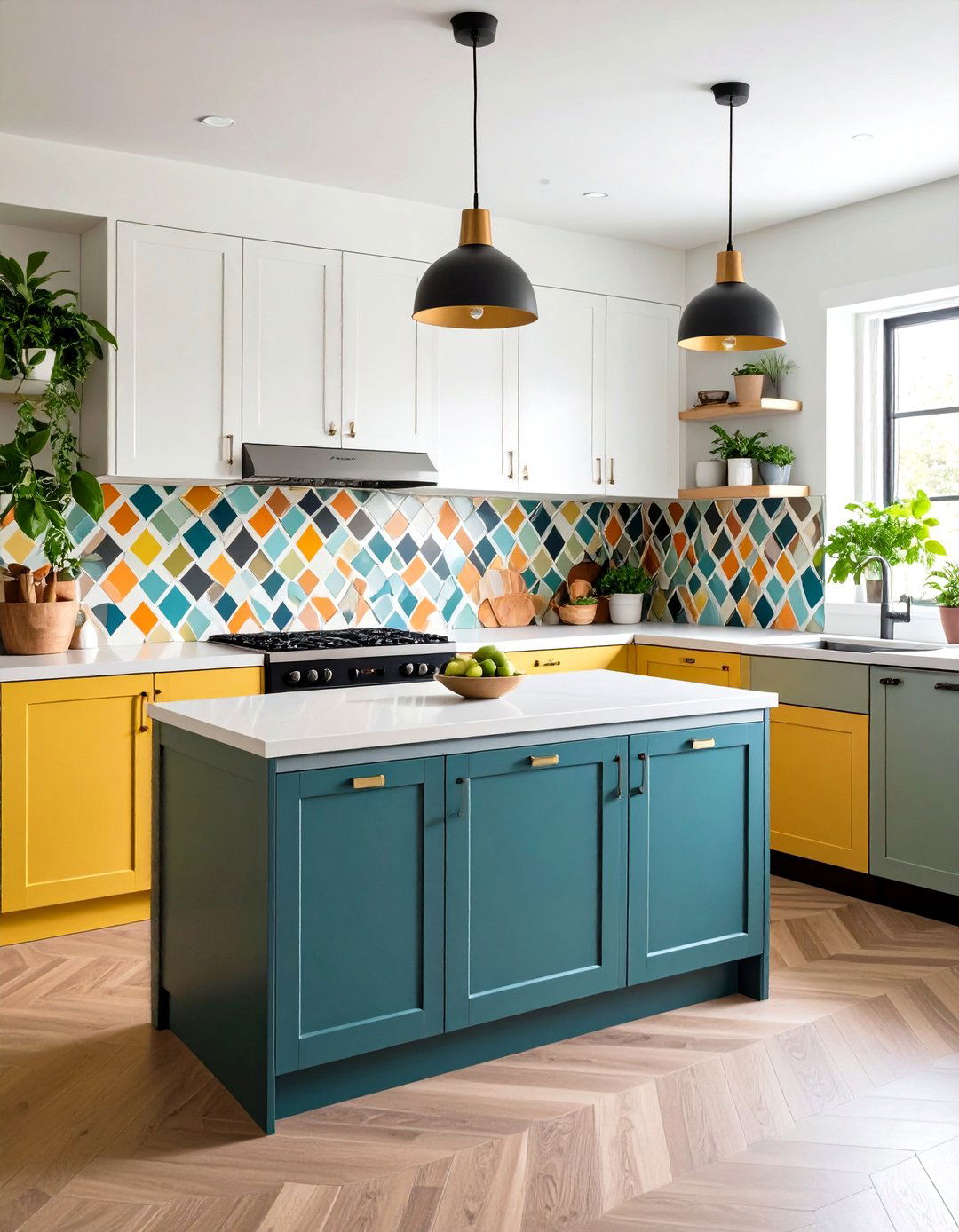

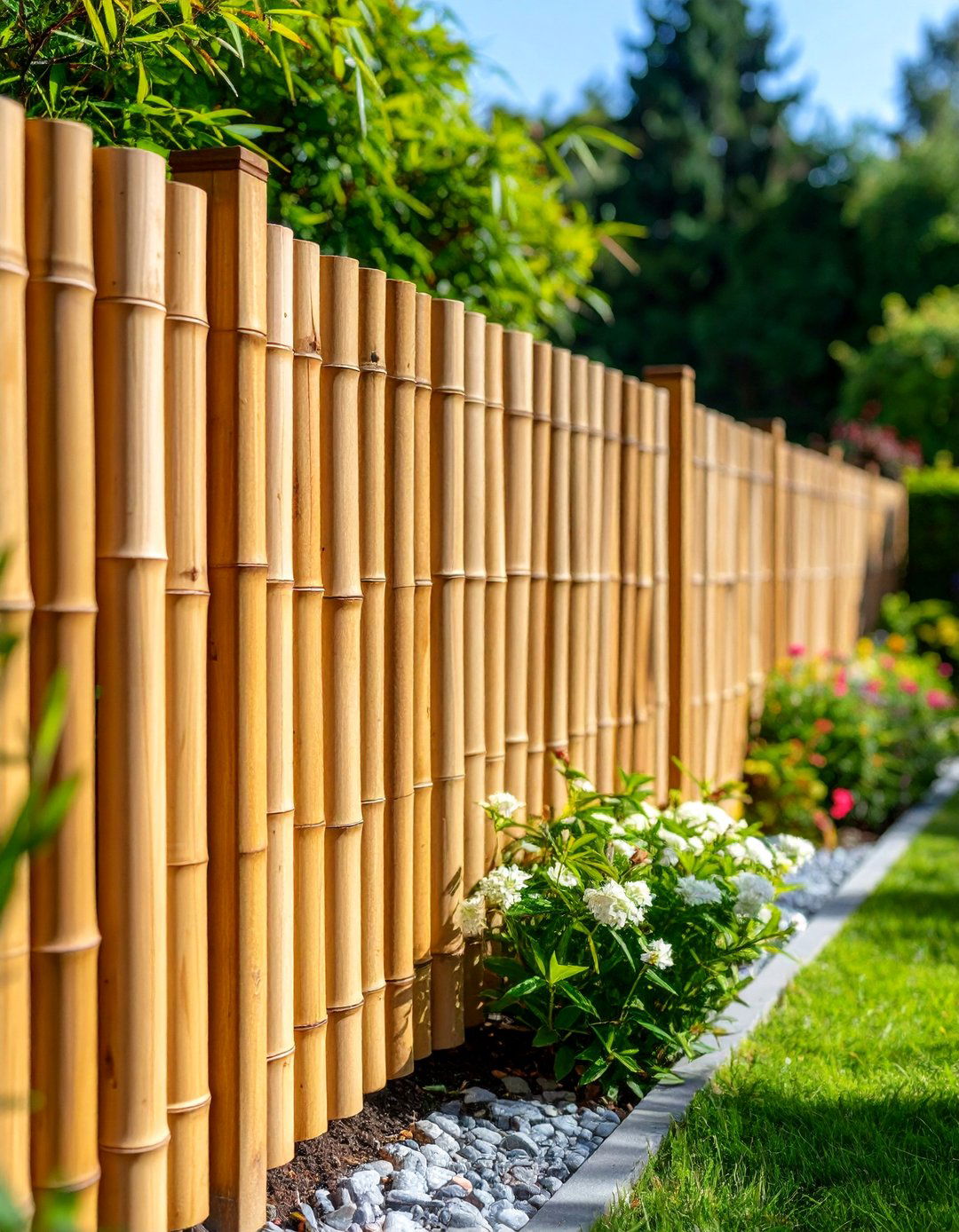

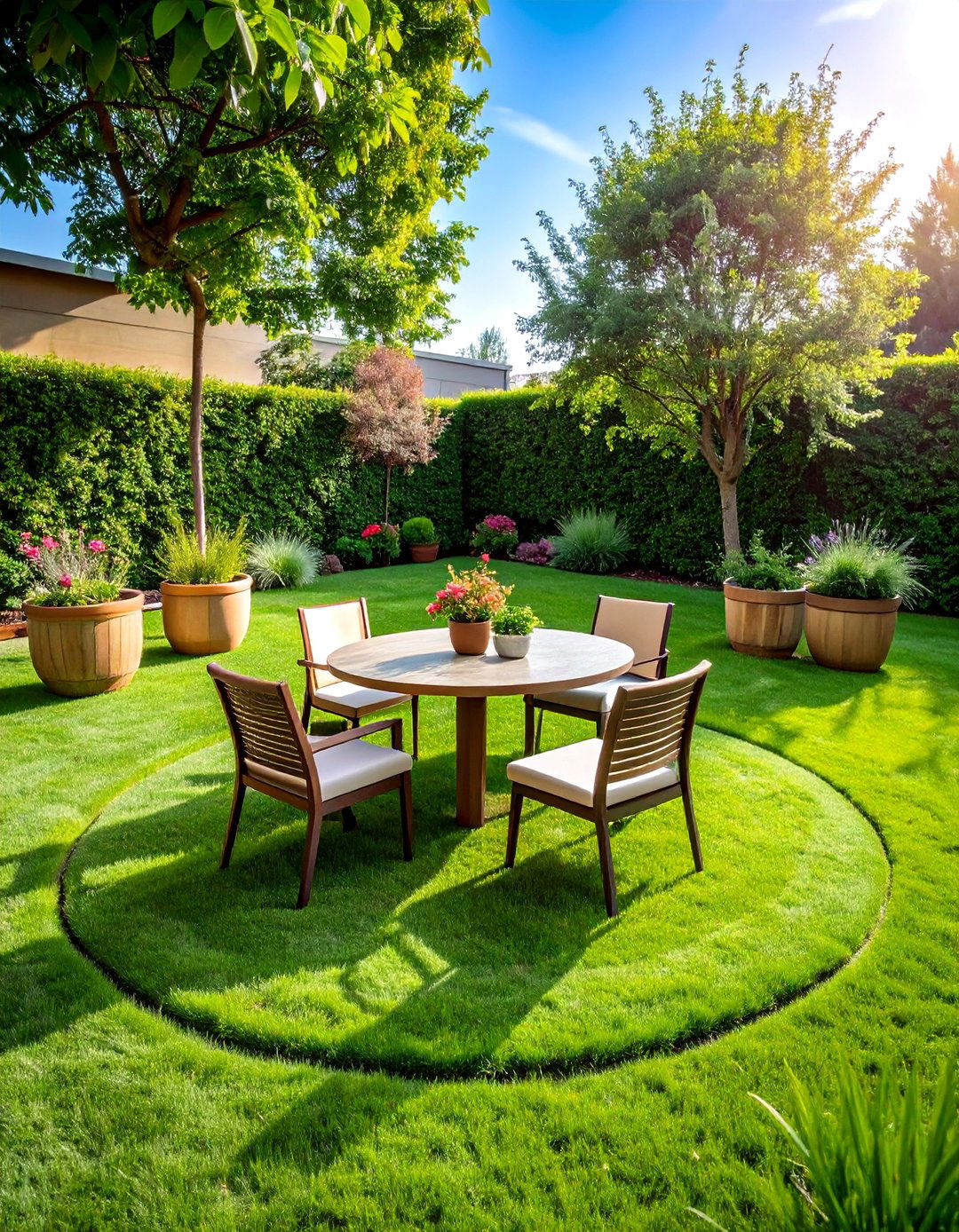

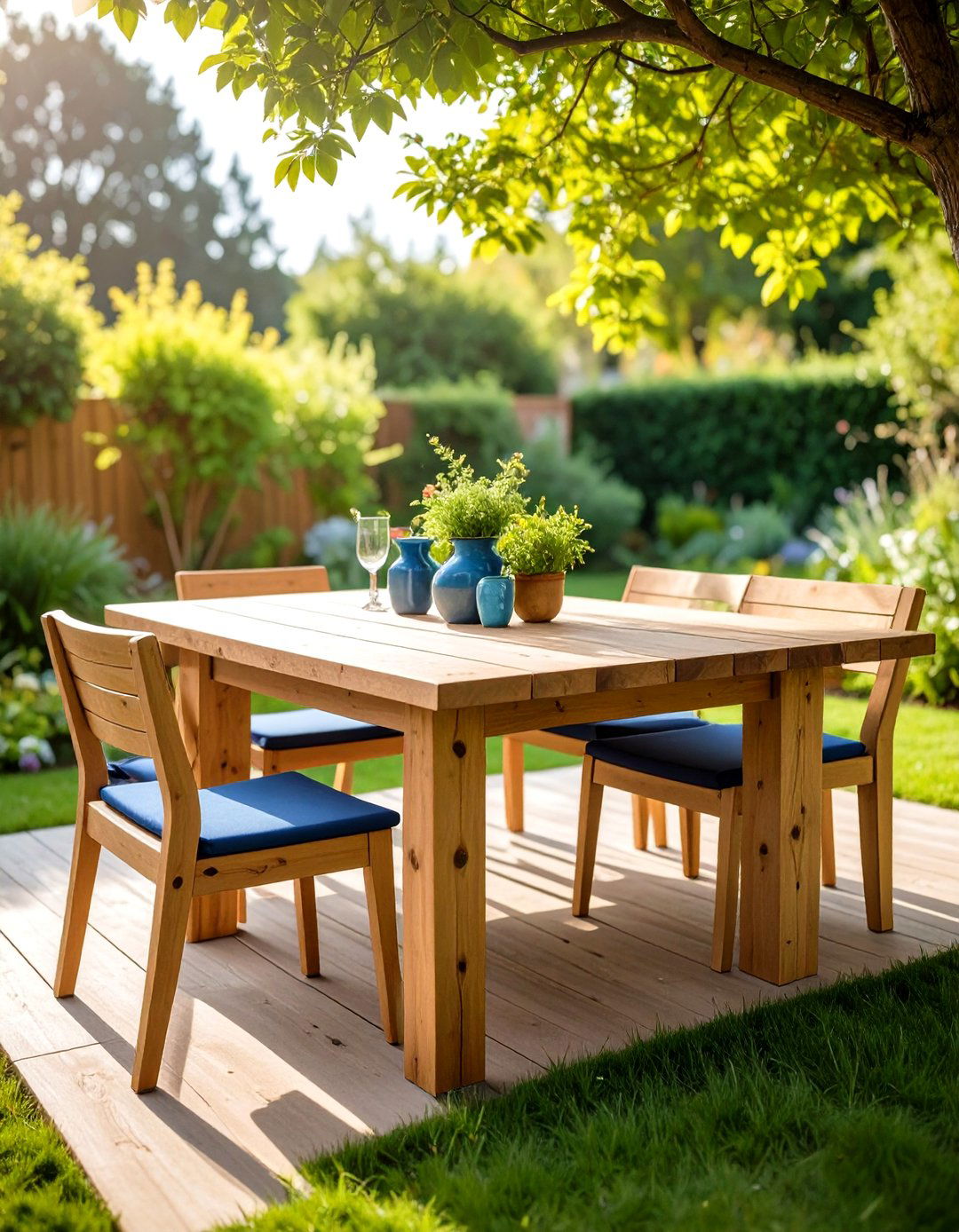

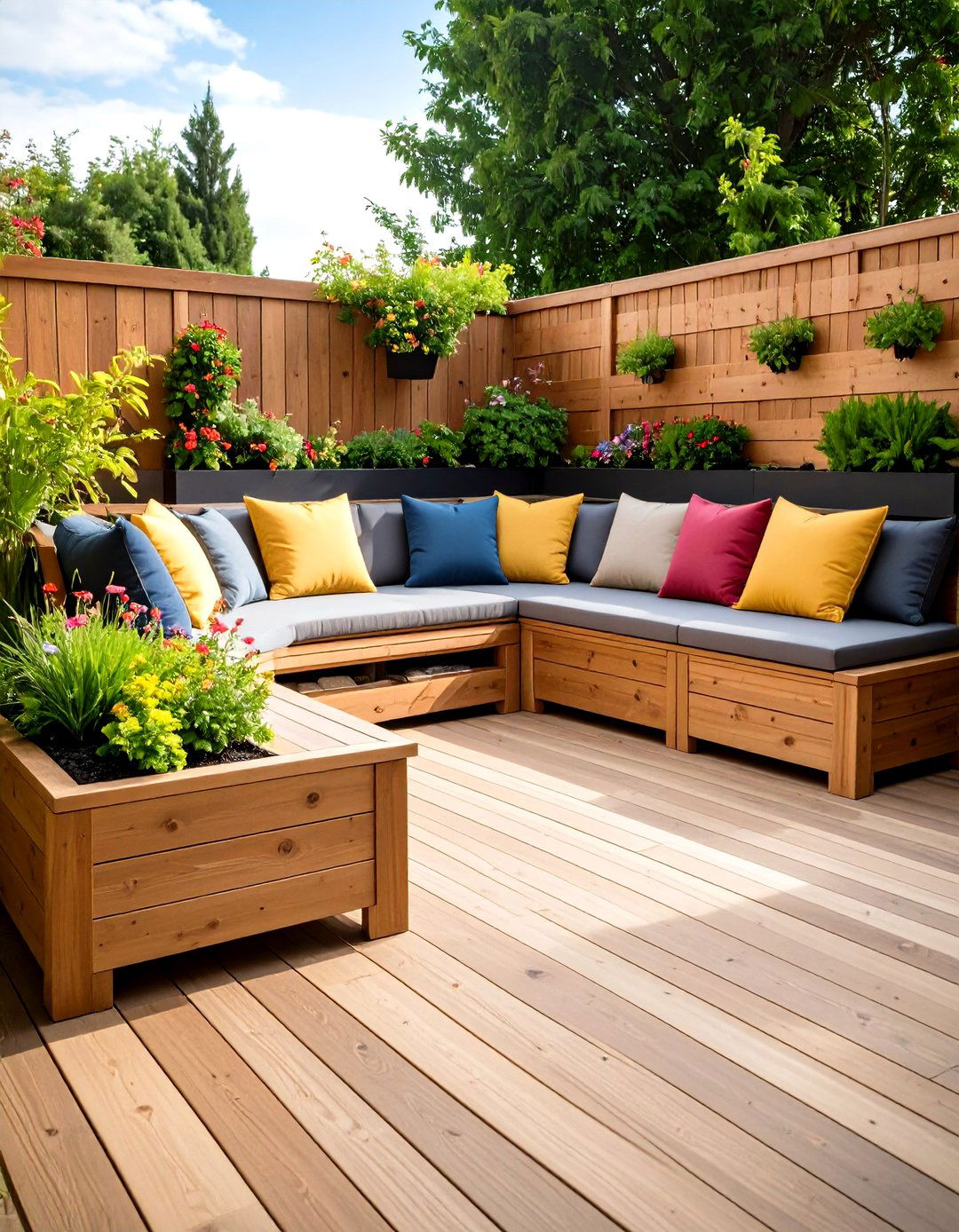
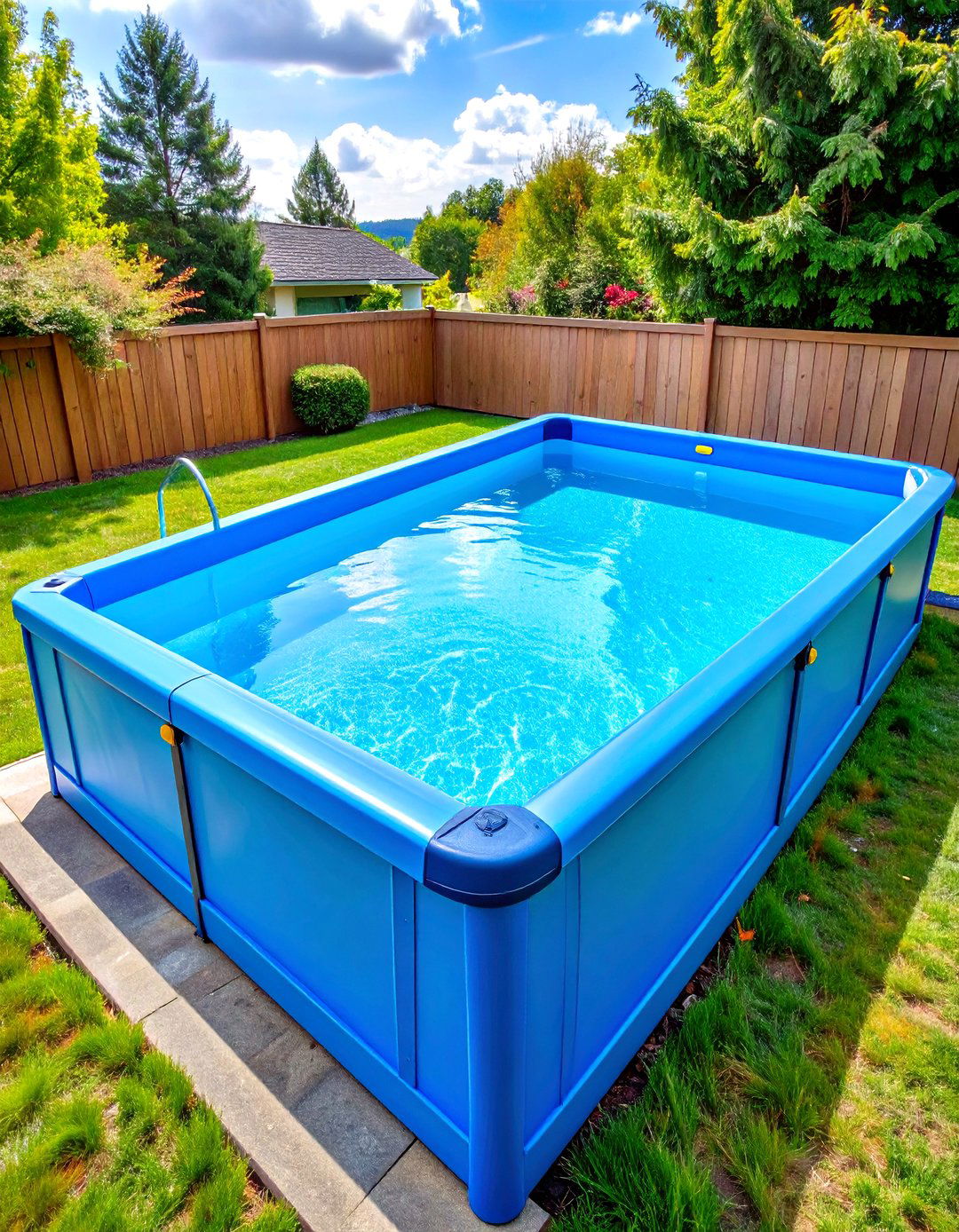
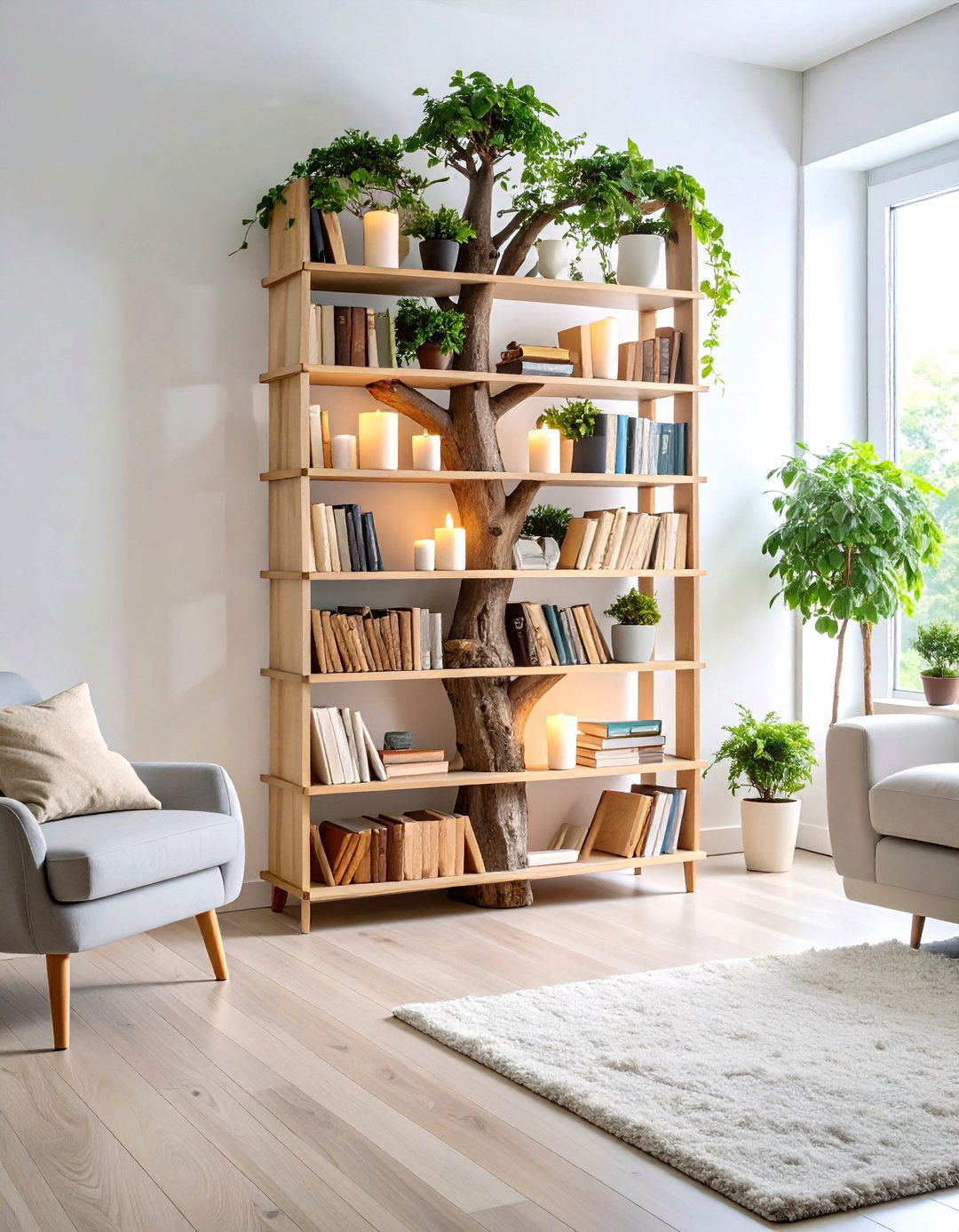
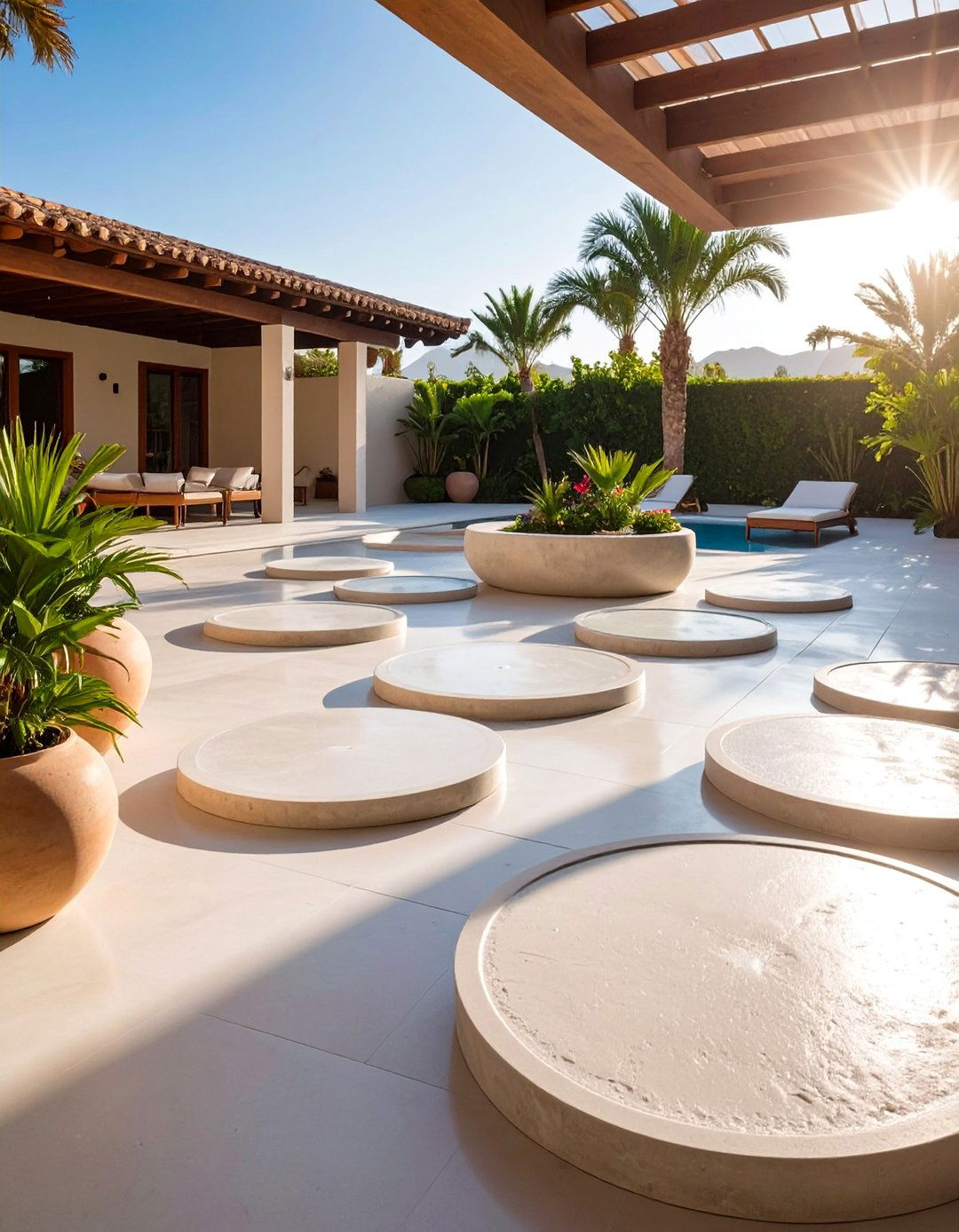
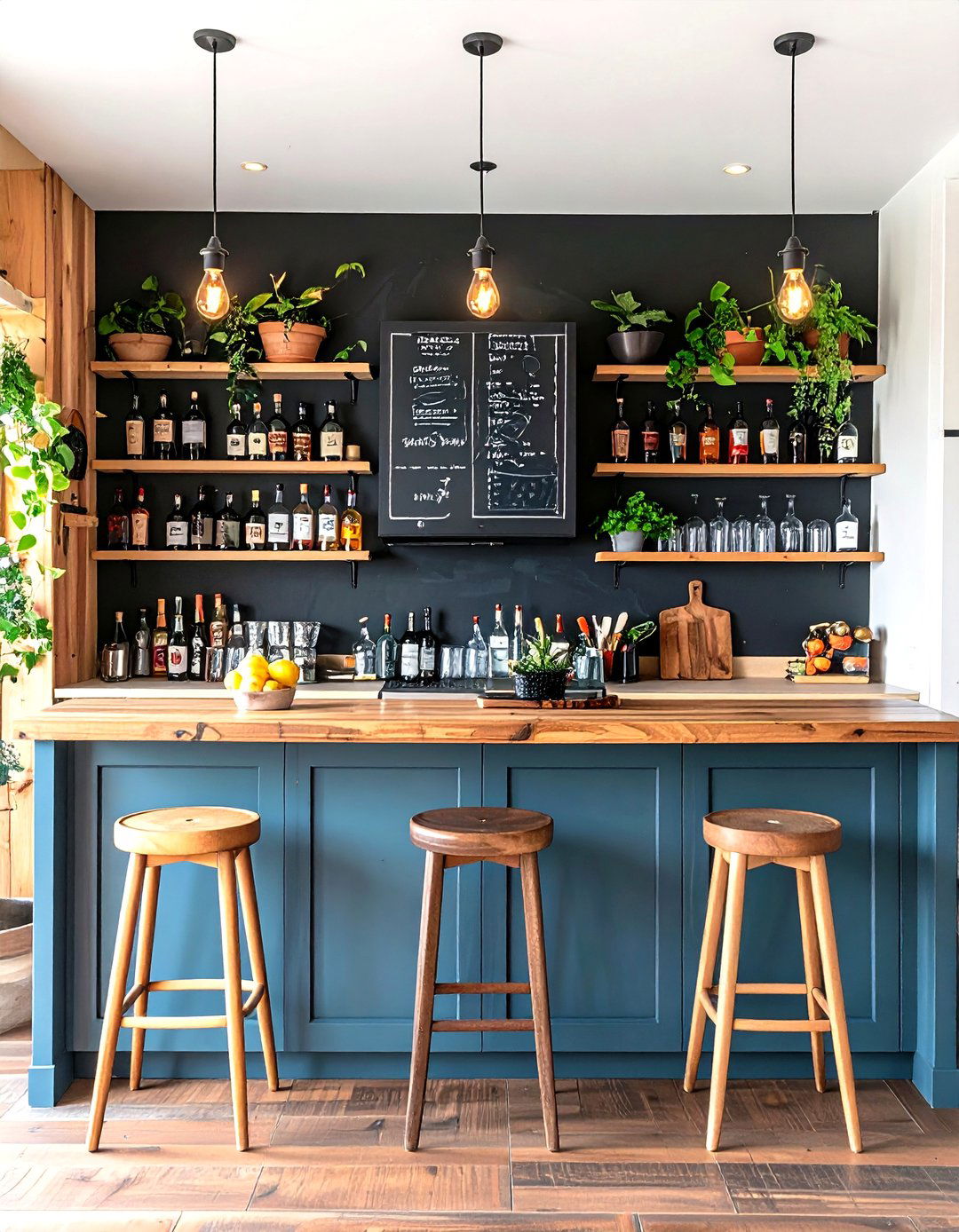
Leave a Reply